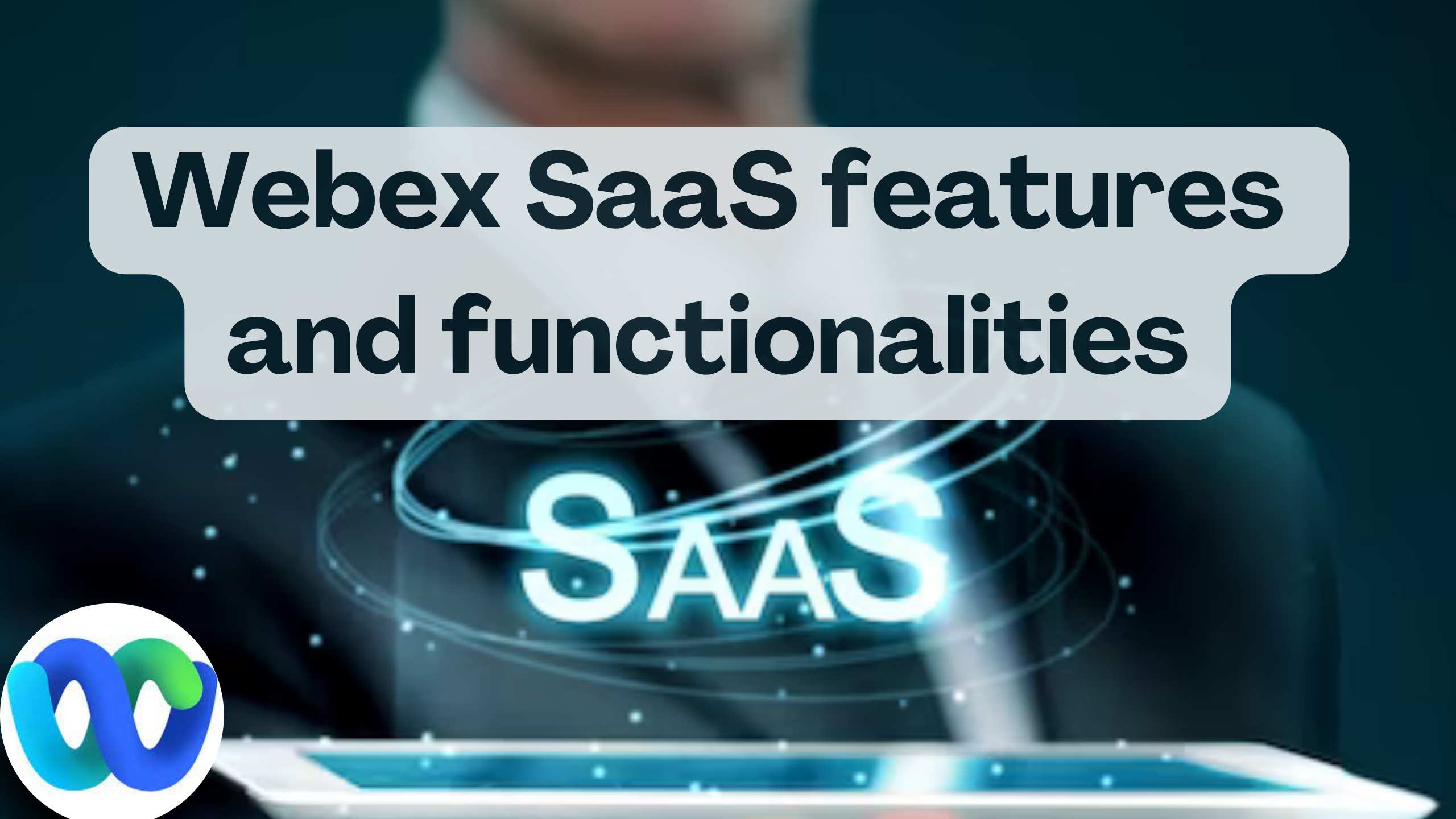Webex SaaS features and functionalities
-


Unveiling the Power of Webex as a SaaS Marvel
In the vast realm of Software as a Service (SaaS), one platform has consistently proven itself as a formidable force – Webex by Cisco. This cloud-based collaboration tool is not merely a communication facilitator; it’s a comprehensive solution that redefines virtual meetings, webinars, and team collaborations. As we unravel the layers of Webex, we aim to address the fundamental query – “Is Webex a SaaS?” The answer is a resounding yes. Webex operates on a subscription-based model, ensuring users can harness its robust features effortlessly via the cloud, without the hassle of on-premises installations.
Webex’s Diverse Capabilities
At the heart of Webex’s allure is its commitment to delivering a seamless experience. High-quality video conferencing serves as a cornerstone, fostering clear and reliable communication across global teams. This is complemented by features like screen sharing and real-time document collaboration, transforming virtual collaborations into dynamic and interactive sessions. Webex doesn’t just stop at communication; it integrates effortlessly with various third-party applications, offering a versatile and customizable experience. Security is paramount, with robust measures in place to protect data and ensure confidentiality. Furthermore, Webex is designed for accessibility, offering a consistent and user-friendly experience on desktops and mobile devices alike.
Webex vs. SaaS Contemporaries
To truly grasp the significance of Webex in the SaaS landscape, it’s essential to compare it with other prominent solutions.
Microsoft Teams: Microsoft Teams, a robust collaborative tool, emphasizes group chat and integrates seamlessly with the Microsoft ecosystem. While it excels in certain areas, Webex stands out with its platform-agnostic approach, ensuring flexibility across diverse workflows.
Zoom: Zoom, known for its video conferencing prowess, competes closely with Webex. However, Webex‘s integration capabilities and emphasis on security make it a compelling choice for enterprises seeking a holistic collaboration solution.
Slack: Slack, a pioneer in team messaging, offers a unique approach to collaboration. Webex, in comparison, extends its reach beyond messaging, providing a broader spectrum of collaboration tools.
Google Meet: Google Meet, a part of the G Suite, is a formidable competitor. Webex, with its comprehensive feature set and cross-platform accessibility, carves its niche in the collaborative landscape.
Asana: Asana, primarily a task management tool, focuses on workflow organization. Webex, with its emphasis on real-time collaboration, complements Asana by enhancing communication within tasks and projects.
Navigating the SaaS Landscape
In the dynamic SaaS landscape, understanding the nuances of each platform is imperative. Webex‘s subscription-based model aligns with the essence of SaaS, ensuring users can harness its capabilities without the burden of infrastructure management.
As we traverse the intricacies of Webex and its counterparts, Subscribed.FYI emerges as the guiding star for freelancers and small teams. In a world where managing a SaaS stack can be daunting, Subscribed.FYI simplifies decision-making and enhances productivity. Unlocking exclusive deals and providing a centralized platform for subscription management, Subscribed.FYI empowers users to navigate the complexities of SaaS tools. The platform’s mission aligns seamlessly with the challenges faced by freelancers and teams, offering a wealth of information to make informed decisions about their SaaS landscape.
Relevant Links:





